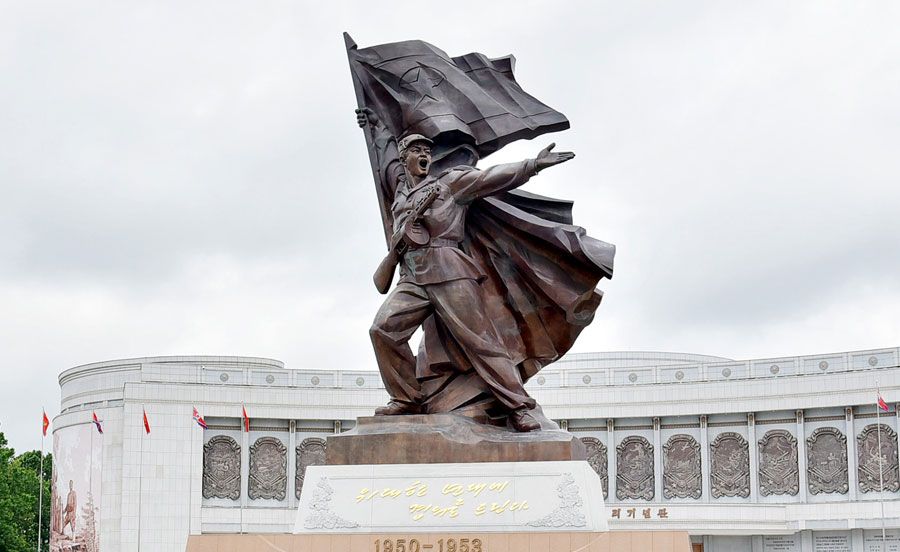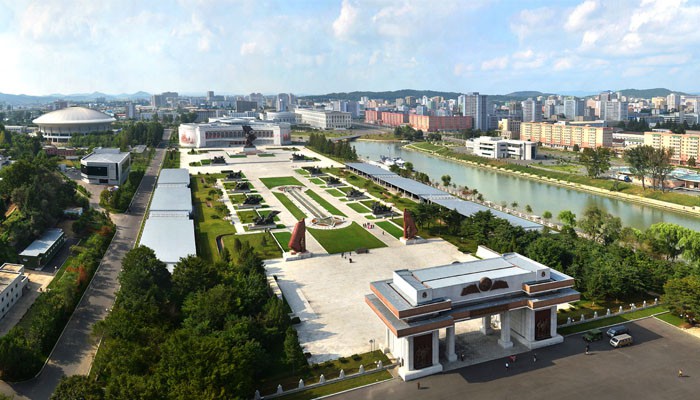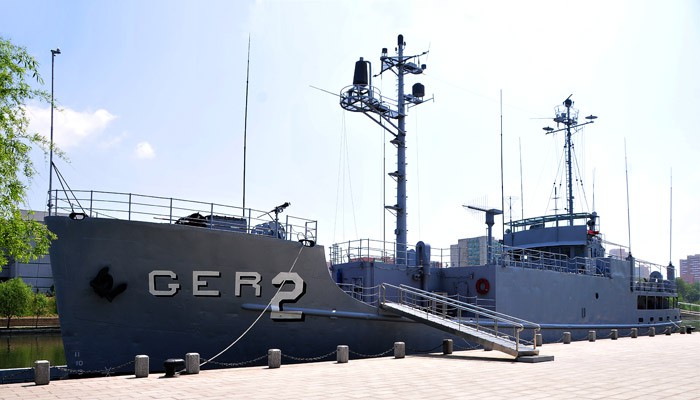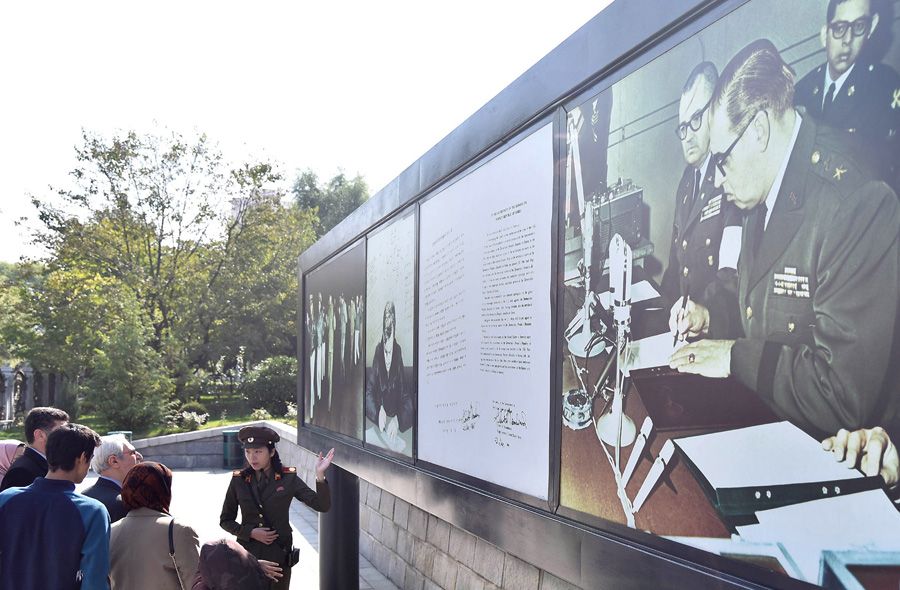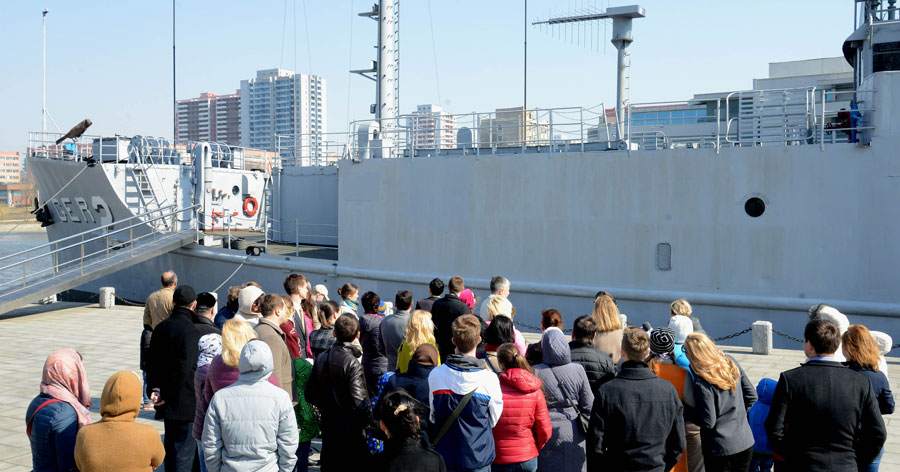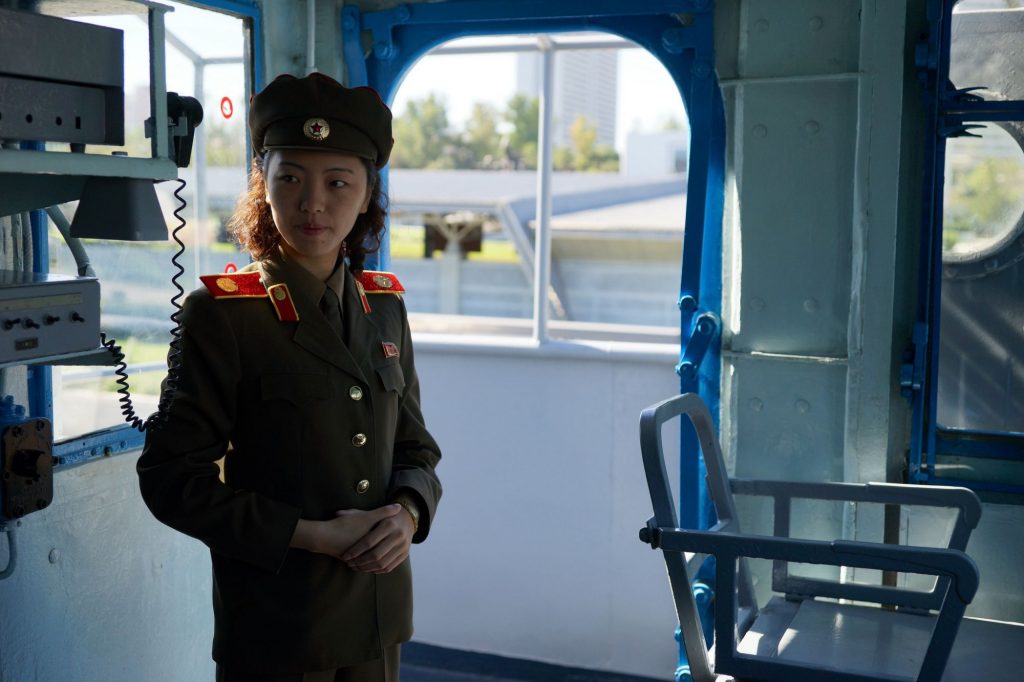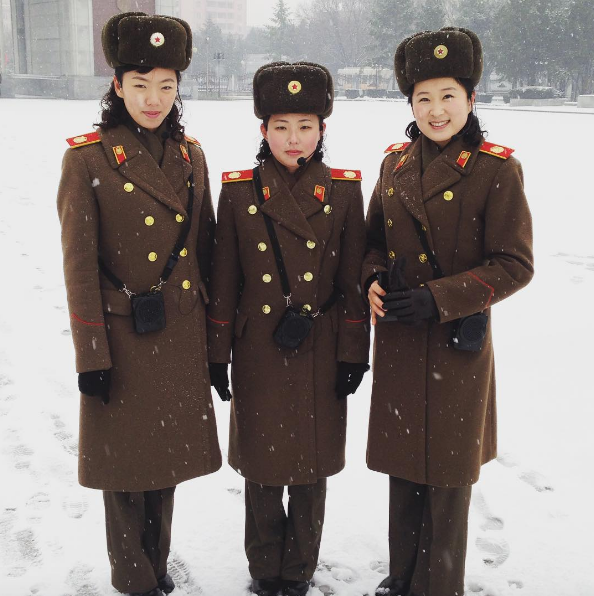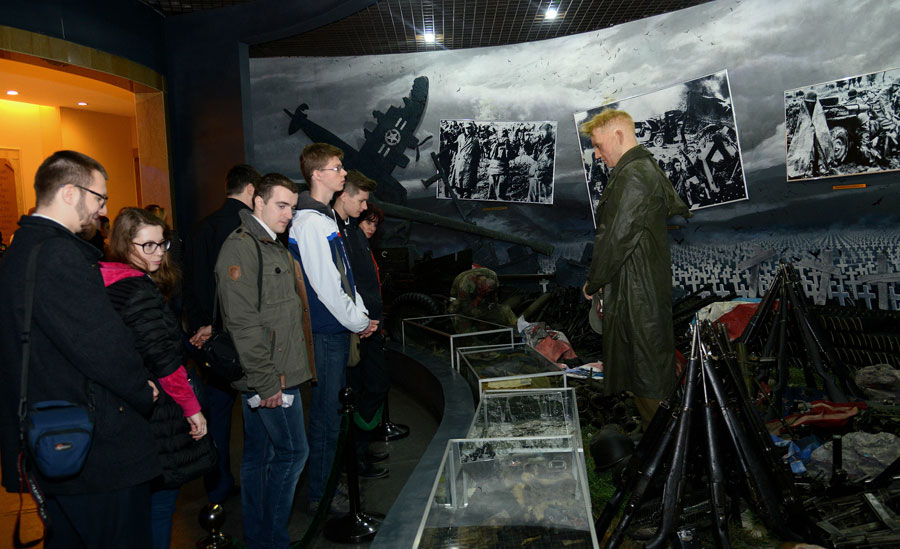A staple of any tour of Pyongyang is the Korean War Museum, known to locals as ‘The Victorious Fatherland Liberation War Museum’, (조국해방전쟁승리기념관) and in actuality dealing both with the Korean war that divided Korea into North and South, but also its liberation from the Japanese during World War II.
History of the War Museum in North Korea
North Korea’s war museum was first opened in August 1953, only a few weeks after the Korean War had ended. At the time it was officially known as the Fatherland Liberation War Museum. The location chosen for the museum was in central district of Pyongyang as efforts were focussed mostly in this district to rebuild after the devastating war.
In April 1963 the museum was moved to the current location where it is found today in Potang River District. A large square three storey building was erected where captured American tanks and aircraft, as well as items and photos left from the war were displayed. Located next to the main exhibition was a circular building which displayed an impressive 360 degree panoramic painting showing the battle for Daesong. A park was also created behind the museum with monuments showing the DPRK’s struggle against the US and the “liberation of Seoul”.
In 2012, construction begun on expanding the museum with an entirely new and much larger building. 10 months later on July 27th 2013, it was opened by Kim Jong Un which marked the 60th anniversary of the armistice agreement in 1953 which forever stalled the Korean war. This day is known to the North Koreans as Victory Day, though technically both South Korea and the DPRK are still at war.
North Korean War Museum outside
The museum itself is an impressive edifice. Your guide, who will be military personnel currently employed at the museum and will pick you up at the gates. The guides all speak wonderful English and will offer an in depth look at the North Korean perspective on the anti-colonial war and Korean war. This is the time to leave your preconceptions at the door, and take a valuable chance to see for yourself how the museum presents the conflict to Koreans.
Before entering you’ll go through a swift security check to ensure you don’t bring in lighters or cigarettes as the entire museum compound is a non-smoking area. Large bags are also not allowed in. Cameras, camera bags, smart phones, and travel wallets are fine to bring with you.
The museum military guides are very friendly and will chat with you if you take the chance to get to know them during some quiet moments in your visit.
Your experience of the museum comprises three distinct parts, two outside (photography allowed) and then the exhibits inside the museum proper (photography not permitted).
A visit always begins with a tour of the impressive grounds and socialist realist statuary outside, including downed US helicopters and fighter aircraft, captured and destroyed tanks and artillery pieces. The grounds are a great spot to get photos, with not only the imposing façade of the museum, but also the nearby monolithic wonder that is the as yet unfinished Ryugyong Hotel.




USS Pueblo tour 
Destroyed US aircraft
USS Pueblo
The second component is a chance to board and tour the captured US spy ship ‘USS Pueblo’, a maritime survey ship that US intelligence repurposed as an espionage vessel. The ship was captured in Korean waters in 1968, and while after a formal apology was issued the sailors captured with it were later allowed to return to the US, the ship remains docked on the Potong River which runs through the museum grounds.
Often you will see groups of locals on a visit to the museum during your time learning about the capture of the ship, and it is a great chance to do some people watching. Visitors can range from a squad of soldiers on leave in Pyongyang, to work teams or school children on group outings. The local visitors are often as curious about you as you are them, with lots of shy and friendly smiles being shot back and forth between groups. Again, you are free to take photos on and around the ship.
North Korean War Museum inside
The final component, is the museum itself, and here is where the photography stops. But I rather think of it as a chance to savour something that other people who don’t make the journey to Pyongyang will miss out on.
The entrance hall itself is quite jaw dropping, a lofty domed spaced, flanked by elaborate balconies and ostentatious marble staircases, a gigantic crystal chandelier adorning the ceiling in the shape of the ‘Marshalls Star’ and an enormous lifelike statue of a young Kim Il Sung in his Marshall’s uniform, this statue is often mistaken as Kim Jong un as the resemblance between the two are uncanny, against a backdrop of fireworks celebrating the cessation of hostilities on July 27th. The number 727 seen as auspicious (look out for cars with a sought after 727 number plate).
The museum is vast, and likely would take a whole day to visit in full. Most tours spend a few hours visiting the most significant and impressive halls, giving a full account of the conflict from the DPRK perspective. As well as displays of weapons and uniforms from the period, a tour always includes an enjoyably kitschly narrated video presentation, and incredible recreations of life in the foxholes and trenches that you walk through, and a 360 panorama, the only remaining part of the old museum and an impressive artistic achievement by the talents at Mansudae art studio.

US Defeat Room
The best bit of all, however, is the chance for a pretty decent cup of coffee and a sit down in the museum’s café, so make sure to bring some change along. As with any museum worth its salt, there is of course a gift shop selling a number of books and souvenirs in connection to the museum too.
For those who would have really liked to have taken pictures from within the museum are able to purchase a photo book of the museum of every room which you may not have had time to visit during your stay.



